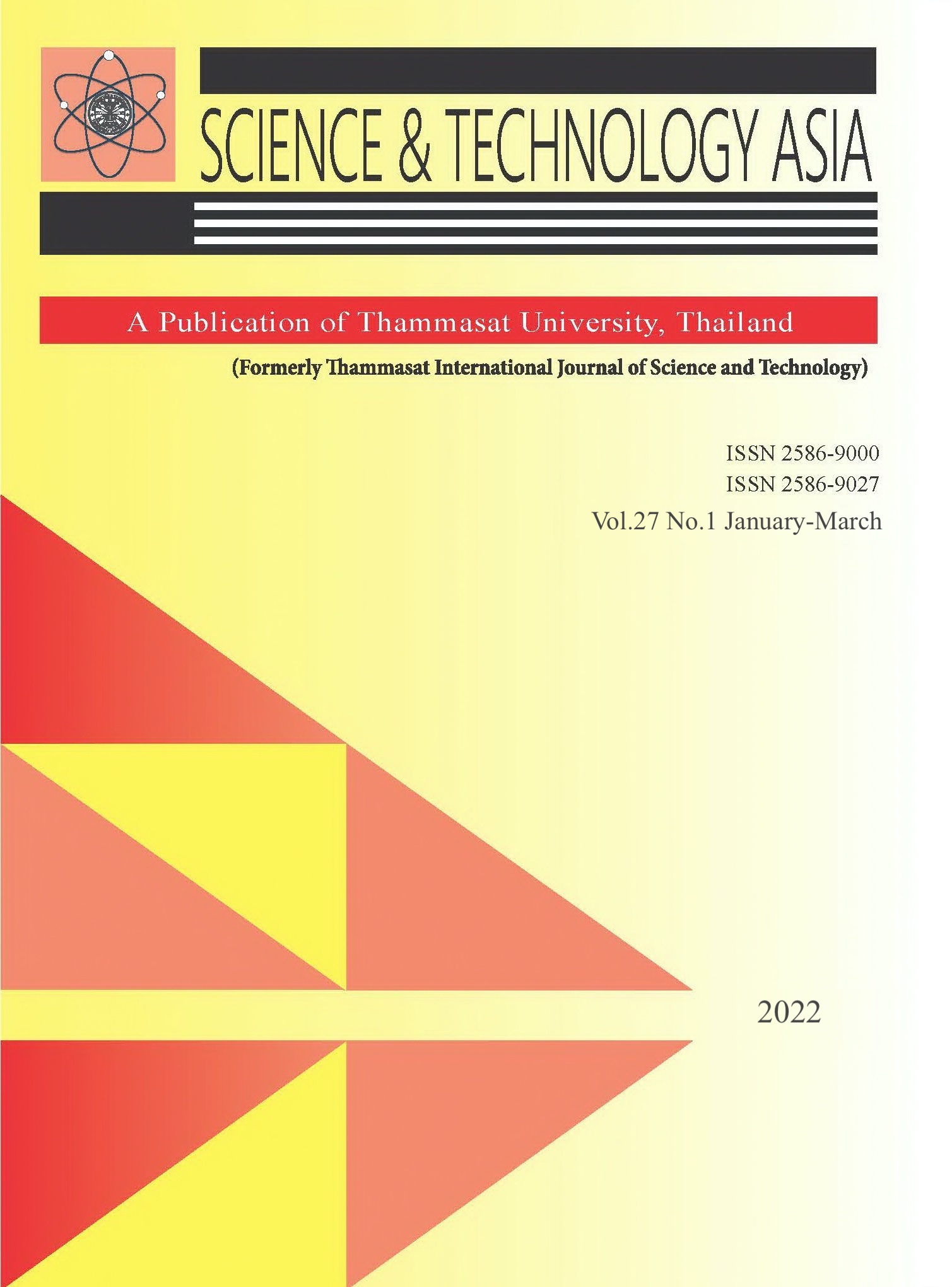Thermodynamic Predictive Design for Single-Step Synthesis of Human Immunodeficiency Virus-1 Gene
Main Article Content
บทคัดย่อ
Synthetic genes have many advantages over natural ones. Gene synthesis strategies that are cost-effective, simple, time-saving and accurate are often developed. Many previous works have suggested the use of numerous short oligonucleotides to improve accuracy. In this study, the prediction of secondary structure, shape and interaction of nucleic acids was studied in a gene synthesis with longer oligonucleotides. The oligonucleotides were designed for the Escherichia coli codon-optimized 318-bp gene coding for the HIV-1 protease and the extra seven amino acids located upstream and function as an auto-processing site. All the designed oligonucleotides were then analyzed for their interactions with NUPACK to predict synthesis, and with gquad and DNAShapeR to predict G-quadruplexes and shape, respectively. To test the prediction, the optimal number of thermal cycling rounds in the assembly step was determined. It was found that this synthesis could be done in a single step without errors as verified by sequencing. This report shows that analysis of minimum free energy secondary structures of the interacting oligonucleotides is useful for checking whether the components can hybridize correctly.
Article Details

อนุญาตภายใต้เงื่อนไข Creative Commons Attribution-NonCommercial-NoDerivatives 4.0 International License.


